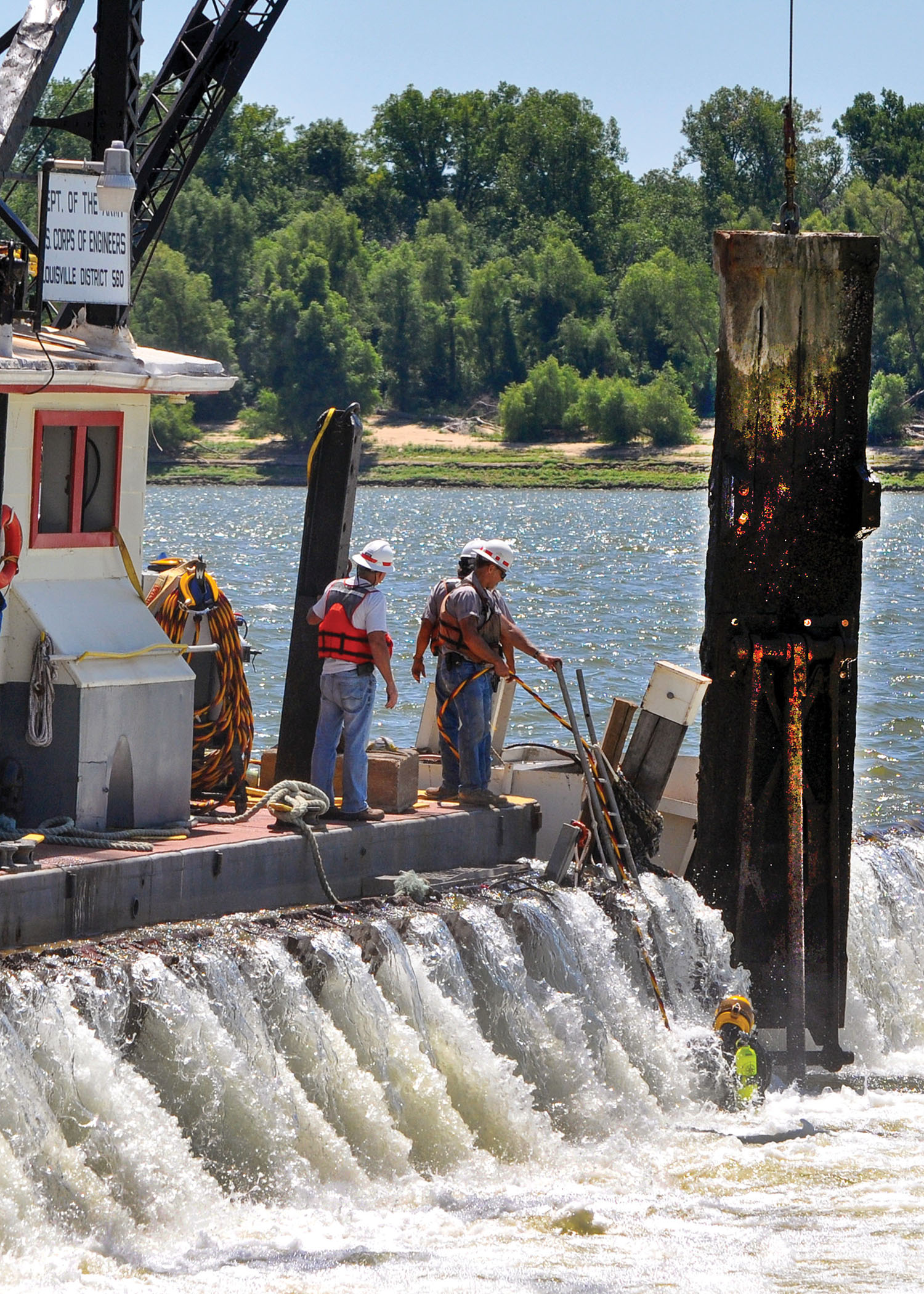The Louisville Engineer District has announced the official closure of the Ohio River Locks and Dam 53 project.
“Locks and Dams 52 and 53 were the last remaining structures from the original Ohio River canalization projects (wicket dams), which were built as part of a 50-year effort to provide year-round reliable navigation between 1879 and 1929,” said Waylon Humphrey, chief of operations for the Louisville Engineer District, in noting the milestone. “The Corps of Engineers began replacing these projects around the 1950s with a system of 19 ‘modern’ structures, to which Olmsted Locks and Dams marked the completion of that approximately 60-year effort.”
He added that removal of Locks and Dams 52 and 53 “closes the chapter on the original Ohio River canalization projects, arguably one of the greatest engineering accomplishments in our nation’s history.”
Locks and Dam 53, near Grand Chain, Ill., and Locks and Dam 52, near Brookport, Ill., were both replaced by Olmsted Locks and Dam, which opened in 2018 at Ohio River Mile 964.4.
Locks and Dam 53 were authorized by the River and Harbors Act in 1909. Construction was completed in 1929. Located 962 miles downstream from Pittsburgh, Lock and Dam 53 had two locks for commercial barge traffic: one that was 1,200 feet long and one that was 600 feet long. Both were 110 feet wide. They operated alongside a wicket dam that Louisville Engineer District crews raised and lowered as needed to maintain a navigational channel depth of at least 9 feet.
The demolition of Locks and Dam 53 started under the Olmsted Dam construction contract and was completed under a final demolition contract. The lower approach walls at Locks 53 were removed by November 2018.
The contract for the final demolition of Locks and Dam 53 was awarded in August 2020 to CJ Mahan, which also oversaw the demolition of Locks and Dam 52. Physical contract work at 53 was completed December 7, 2023, said Joel Switzer, construction division project engineer for the Louisville Engineer District. Physical work at Locks and Dam 52 was completed February 21, 2023, he said. Both projects are now in “closeout” stage, he said.
Switzer said the majority of the lock and dam demolition was performed by drilling holes into the various concrete structures before blasting them with explosives.
“This was then followed by excavation and final grading from a stabilized barge to ensure all existing concrete structures within the river were demolished to a maximum elevation of 280 feet,” he said.
The work was performed underwater since as Olmsted went into operation, the lock walls, piers and wickets were fully submerged, even with drought conditions during the period of demolition, Humphrey said. The Olmsted project holds the navigable pool up to the tailwaters of Smithland Locks and Dam as well as to Kentucky Dam on the Tennessee and Barkley Dam on the Cumberland River.
There were some challenges with demolition.
Differing site conditions discovered at the landside cells at 53 meant that almost every one was demolished in a slightly different fashion, which didn’t match what the contract documents anticipated, Switzer said.
“This led to a subcontractor having to perform underwater diver surveys on each cell to determine how to safely and efficiently remove the sheet pile and rip-rap at each spot,” he said. “This differing site condition was the cause of various delays and change orders in order to correctly remedy the issue.”
With the work now completed, Switzer said no part of the former Locks and Dam 53 are visible above water other than stone protection along the banks that was installed as part of the demolition contracts.
Caption for photo (click on photo for full picture): From left, former diver supervisor Randy Robertson and dive tenders Phillip Noel and Jake Winburn work with diver Kenny Robertson to remove a worn-out white oak wicket from the dam at Lock and Dam 53 on the Ohio River, June 26, 2012. (Photo courtesy of Louisville Engineer District)




